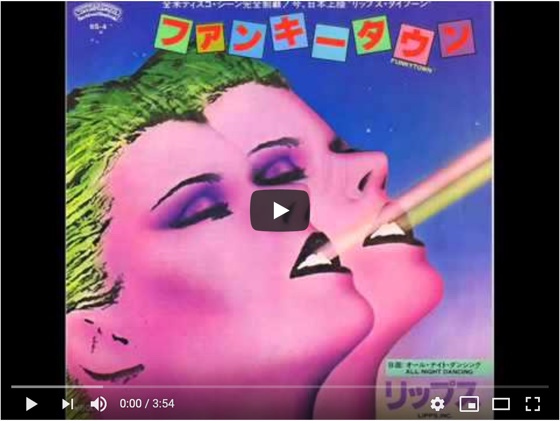
Talk of wellness is everywhere you turn, and that’s a good thing.
Taking a proactive approach to your physical and mental health is both smart and crucial to your well-being. And rest assured that with something this big and important, the marketers are out in full force.
The problem is, most commercial wellness solutions are not only not necessary, they often simply don’t work. And yet, we’re endlessly enticed by the latest goop, gadget, and fitness craze that promises to get us where we want to be.
It’s not that wellness isn’t worth investing in, because what could be more important? It’s just that the proper investment is usually in time, effort, and sweat.
Wellness—the kind that actually works—is simple: it’s about committing to basic practices, day in and day out, as individuals and communities.
More from Brad Stulberg writing for Outside on the simple things that work for wellness here:
We’ve Reached Peak Wellness. Most of It Is Nonsense.
Curing old age
We explore longevity science quite a bit around here, and the efforts to extend our lives by eliminating or delaying aging will continue to accelerate. It all hinges on one central question: “What if the panoply of diseases that strike us in old age are symptoms, not causes?”
What if Aging Weren’t Inevitable, But a Curable Disease?
Unique like everyone else
Copying someone else’s training plan seldom produces the same results for you as it did for them. A new study puts some numbers behind this observation, and offers some helpful insights on which details matter most (and least) for building strength.
Why Your Friend’s Gym Routine Might Not Work for You
It’s called gratitude, and that’s right
If you can make gratitude a regular habit, everything else comes a little easier. One study found that participants who wrote down three good things each day for a week were happier and less depressed at each of the one-month, three-month, and six-month follow-ups
The Science Behind a Gratitude Journal
This life isn’t a dress rehearsal
Midlife is when people start to really figure out what they want out of life. But what do you do when you know what you want out of life, but you’re so far away from it that you don’t know where to start?
From the Life You Have To the Life You Want
Don’t forget to scroll down for two great articles from Trudi, and this week’s Further Flashback gives one-hit-wonder disco songs a good name. Yes, really.
Keep going-
P.S. Did someone forward this issue of Further to you? We’d love to have you join us by signing up here.
How to find the good life at midlife

By Trudi Roth
If there were ever a time for existential questioning, midlife is it. You’re old enough to confront the fact that there are roads you’ll never take, but young enough to still have miles to go, both professionally and personally.
While most of us wouldn’t label this a full-on crisis, it’s normal to grapple with midlife dissatisfaction. And sure, relief is in sight, with evidence from social science that happiness is U-shaped, with a positive upswing to look forward to around age 50.
Still, what to do about today’s doldrums? That’s more of a metaphysical question than anything else — and the reason MIT philosophy professor Kieran Setiya decided to write a book on the philosophy of midlife instead of buying a muscle car to address his own malaise.
Reframing FOMO and regret
It’s easy in middle age to let both nostalgia for what was and regret over what might have been color your present days.
From a philosophical perspective, this is related to the plurality or incommensurability of values. In other words, what you value isn’t arranged on a single scale where one compensates for the loss of others. Even when you’re confident that you’ve made the “right” choices, you may still have remorse about past decisions.
A way to reframe this existential FOMO is to recognize that that regret about the life you may have lived is the inevitable consequence of something positive — and worth embracing.
Setiya quotes philosopher Robert Adams for the proposition:
If our lives are good, we have reason to be glad we’ve had them, rather than the lives that would have been even better, but too thoroughly different.
A work in process
Another common midlife puzzle is knowing you’re successfully doing worthwhile things, yet somehow the prospect of continuing on the same path feels hollow. And it makes you wonder: If all’s well, what more could I possibly want?
The answer may be found in the nature of how we define success. The midlife hamster wheel of work, parenthood, and caring for aging parents is driven by tasks that we fly through as quickly as possible. Satisfaction is constantly either deferred or archived, with nothing to savor in the present.
The answer to filling up this inherent hollowness, according to Setiya, is to right the balance between project-focused, “telic” activities (those with a clear beginning, middle and end) and “atelic” activities, where pleasure is found in the process. It’s the difference between running an errand, and taking a walk with no destination in mind.
In other words, it’s time to get a hobby, like gardening or playing an instrument. Riffing in the present is one of the best ways to stop singing the midlife existential blues.
- Getting the Most from a Midlife Crisis (MIT Alumni Association)
- Midlife: A Philosophical Guide (Amazon)
The upside to the downside of meditation

By Trudi Roth
I took up mediation at 50 in anticipation of two of life’s biggest challenges: my kids leaving the nest and my parents’ age-related decline. The idea was to make the midlife passage as gentle and merciful as possible.
Imagine my surprise, then, when on a meditation retreat in India, I found myself weeping through a morning session and immediately thereafter experienced a short-lived but excruciating migraine headache.
My teacher witnessed the whole thing, then smiled knowingly and said, “Better out than in.”
While meditation is proven to provide all the benefits you hear about, like reduction of depression, stress and anxiety, better sleep, improved heart health and burnout relief, the process of releasing thoughts and emotions can also unleash unpleasant emotional and physical experiences.
Who knew there could be a disturbing yin to that peaceful yang? Don’t worry — it’s ultimately all good.
Why de-stressing can be distressing
Zen Buddhists know this dark side of meditation so well that they have a name for it: makyo, which blends the Japanese words for “devil” and “objective world.” And Sanskrit speaks about how the practice deals with samskaras — deep grooves in your psyche worn by past, often negative, experiences.
The work of meditation is what Zen master Philip Kapleau described as “a dredging and cleansing process that releases stressful experiences in deep layers of the mind.”
This makes sense considering there’s loads of evidence that meditation actually changes your brain composition for the better. And it’s what led two Brown University professors, Jared Lindahl and Willoughby Britton, to co-author a study of newbies to experienced practitioners in order to help shed scientific light on the more difficult aspects of meditation.
As Lindahl points out:
Just because something is positive and beneficial doesn’t mean we shouldn’t be aware of the broader range of possible effects it might have.
Keep an open mind
The study found 59 different kinds of uncomfortable effects, including anxiety, fear, involuntary twitching, time/space distortion, emotional detachment, hallucinations, insomnia, hypersensitivity, nausea, irritability, and the reliving of past traumas.
(Kinda sounds like an antidepressant disclaimer, doesn’t it?)
But just because the feelings were difficult doesn’t mean the experience was seen as negative. The letting go of unresolved emotional issues that impact neurology was described by most in the study as challenging, not adverse. While this can lead to some abandoning the practice, the support of an experienced teacher can make sitting through the discomfort transformative.
From my own experience, I can tell you whatever emotional baggage I dropped off in India has left me feeling brighter, happier, and more at peace. As my meditation teacher says, darkness isn’t the opposite of light, but simply where light hasn’t yet reached.
There’s a Dark Side to Meditation That No One Talks About (Quartz)
further: flashback

Funkytown — Lipps Inc.
Mouth to Mouth, 1979
The world of music is littered with one-hit wonders, some more memorable than others. In 1980, Funky Town from Minneapolis-based Lipps Inc. became a No. 1 hit in 28 different countries, making it a global disco sensation. Surprisingly, that was a good thing, and it’s a great listen to this day. (YouTube)
further: sharing
Please forward this issue of Further to a friend. Thank you!
